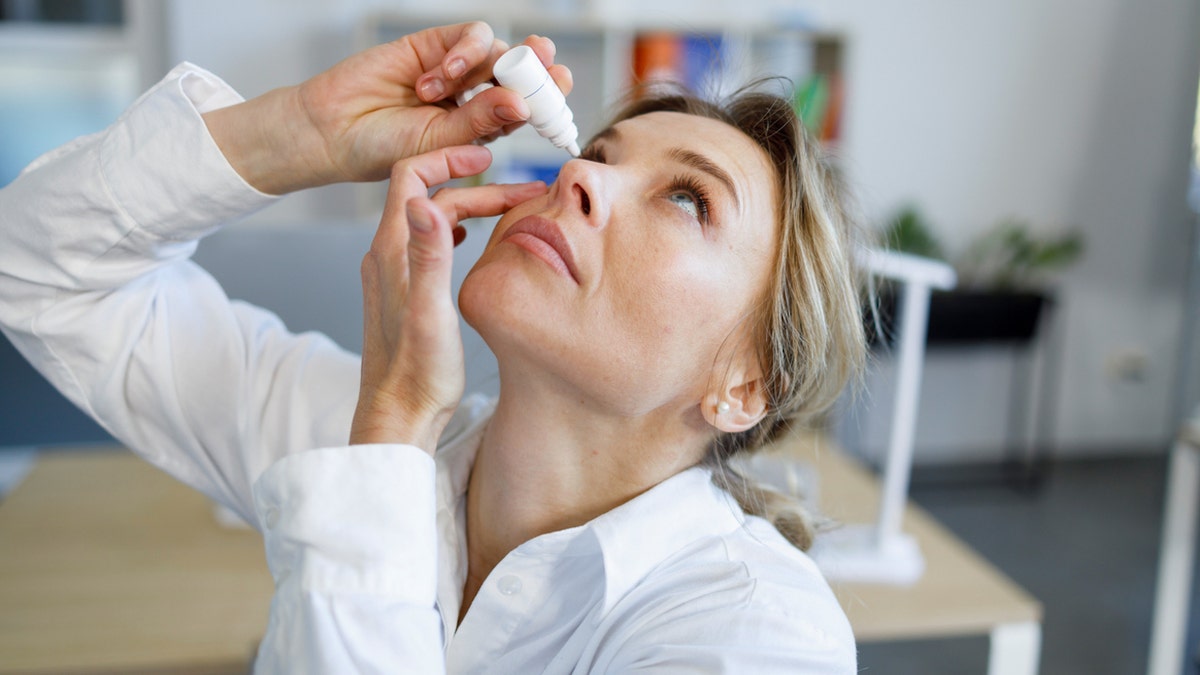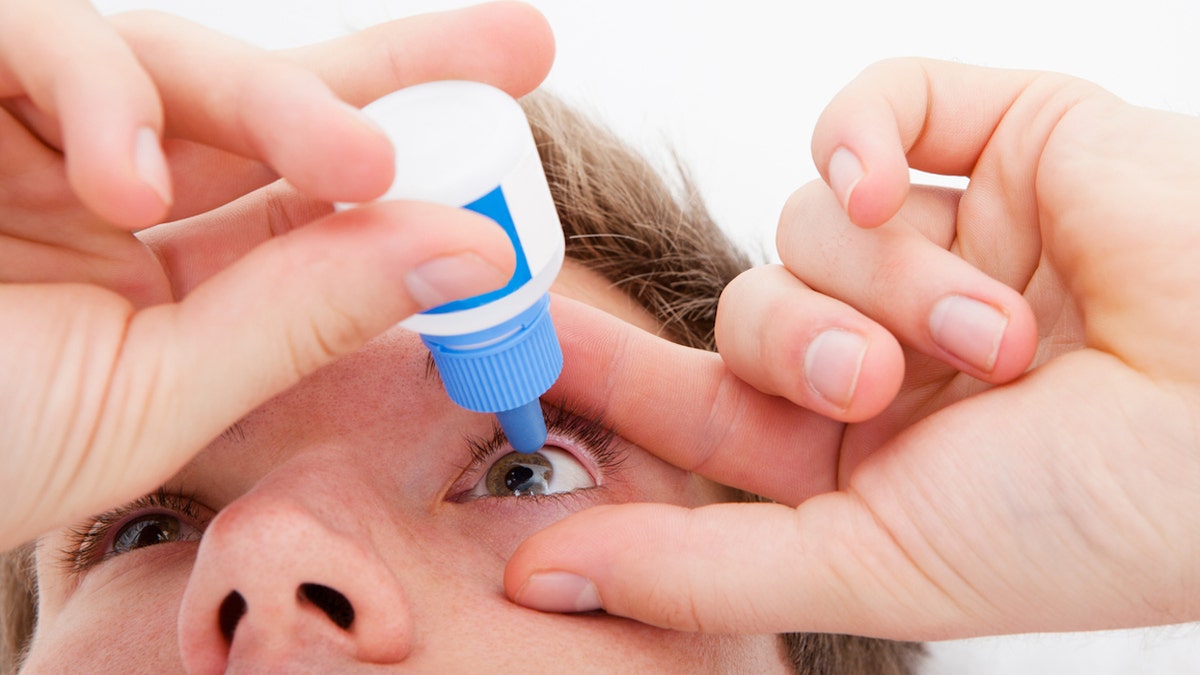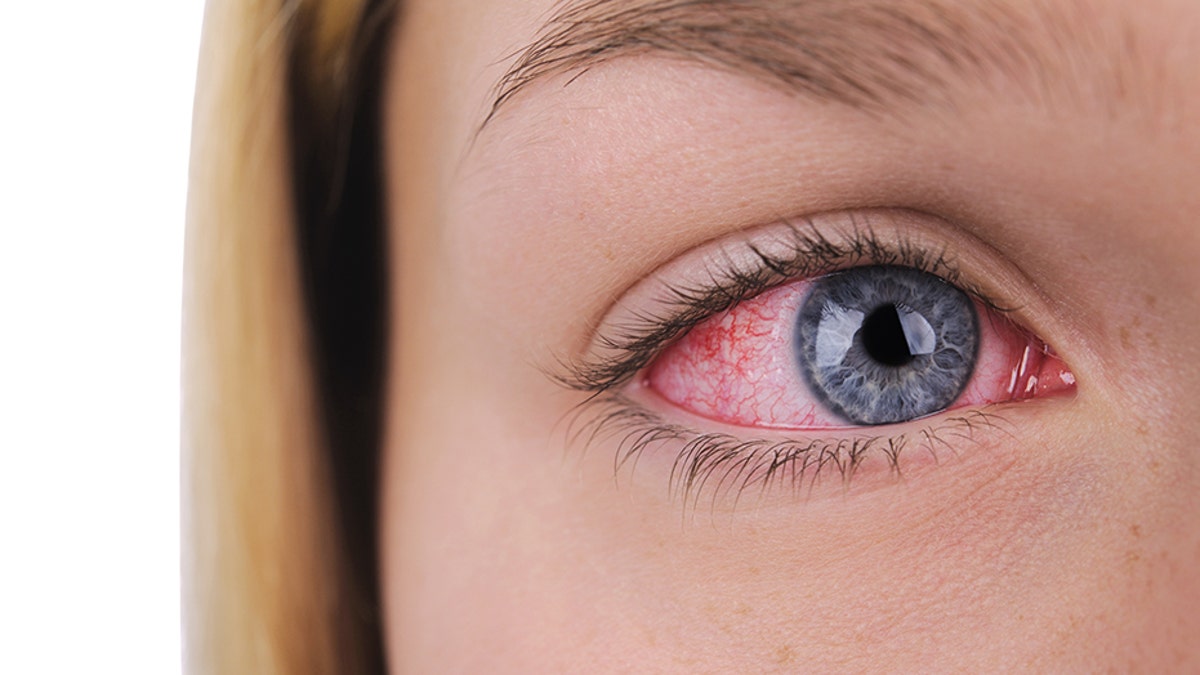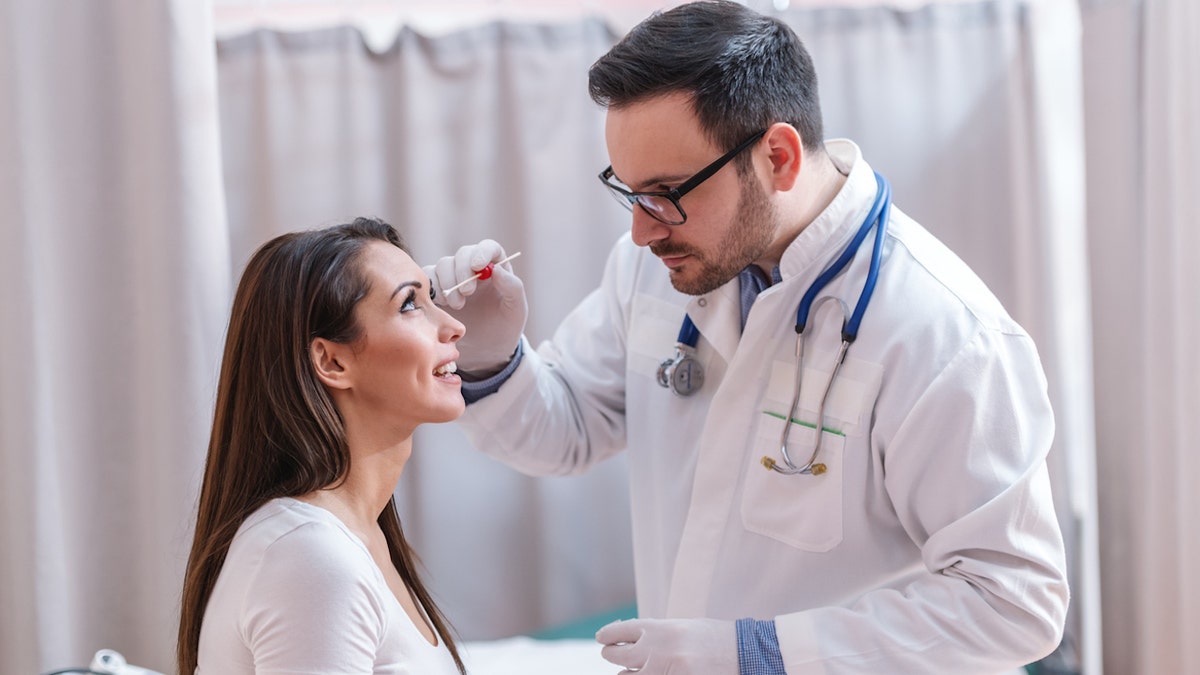Fox News Flash top headlines for March 1
Fox News Flash top headlines are here. Check out what's clicking on Foxnews.com.
In light of recent news that a brand of over-the-counter eye drops may have caused bacterial infections that led to vision loss and even death, consumers may be wary of using them at all.
Thomas Stokkermans, OD, PhD, director of optometric services for University Hospitals Cleveland Medical Center in Cleveland, Ohio, said that eye drops are generally completely safe to use.
"Reported infections from eye care products are extremely rare," he told Fox News Digital in an email.
"It is much more likely that the wrong use of eye care products causes injury."
'EYE' ON LIFE: WOMAN GOES VIRAL FOR SHOWING HOW SHE INSERTS ARTIFICIAL EYE AFTER CANCER BATTLE
The Centers for Disease Control and Prevention (CDC) on Jan. 20 called for people to stop using EzriCare Artificial Tears after 50 patients reported eye infections associated with the product.
The bacteria, Pseudomonas aeruginosa — which is resistant to many antibiotics — was linked to respiratory infections, urinary tract infections, permanent vision loss, hospitalization and even one death.

In light of recent news that a brand of over-the-counter eye drops may have caused bacterial infections that led to vision loss and even death, consumers may be wary of using them at all. Two doctors shared important insights. (iStock)
Dr. Stokkermans saw one of the affected patients in the ophthalmology department at UH Cleveland Medical Center.
The person lost almost all her vision in the affected eye.
A bacteria in EzriCare Artificial Tears was linked to respiratory infections, urinary tract infections, permanent vision loss, hospitalization and even one death.
On Feb. 23, the Food and Drug Administration (FDA) urged consumers to avoid purchasing or using another product, Delsam Pharma’s Artificial Eye Ointment, due to possible bacterial contamination.
Previous cases
Long before the EzriCare and Delsam Pharma incidents, other eye products had been recalled due to ocular infections, Dr. Stokkermans pointed out.
In previous cases, the infections apparently came from contact lens solutions.
WARNING FROM LASIK EYE-SURGERY PATIENTS TO FDA: MORE NOTICE OF 'SIDE EFFECTS' IS NEEDED
"In May 2007, the CDC linked AMO Complete MoisturePLUS contact lens solution to reports of Acanthamoeba keratitis, a rare parasite that can cause a serious and potentially blinding eye infection," he said.

"Reported infections from eye care products are extremely rare," said one optometrist. "It is much more likely that the wrong use of eyecare products causes injury." (iStock)
"And in May 2006, the FDA issued a recall for B&Ls ReNu Moisture Loc after several users reported fungal keratitis infections, which are serious and hard to treat. B&L ended up settling 600 lawsuits of people affected by this infection."
Infections seen as exception, not rule
Dr. Stokkermans called the EzriCare-related infections "very unfortunate."
He said they have degraded consumers’ trust in having access to safe, healthy medications and supplements.
"Often, there is no way to know beforehand that a manufacturer has produced a tainted product until a number of consumers have been affected and it is advertised in the news," he said.
EYE SPY A BIG PROBLEM: CALIFORNIA DOCTOR REMOVES 23 CONTACT LENSES FROM ONE WOMAN'S EYE
"It’s important to remember that it is extremely rare for eye drops to be recalled due to microbial infections."
He added that the best safeguard against infection or eye disease is to only treat the eye with drops that have been prescribed or recommended by a doctor.
Optometrist Juanita Collier, MS, OD, FCOVD, offers vision therapy at her 4D Vision Gym office in Cromwell, Connecticut.
She said that eye drops containing preservatives are generally safe to use, as the preservatives extend the life of the drop safely and protect against pathogens. However, she recommends using caution with preservative-free brands.
How to know if you have an infection
With allergies and other medical conditions often causing red, itchy and watery eyes, it may be difficult to determine when the symptoms indicate an infection.

Given that infections, allergies and general sensitivities can share some of the same symptoms, it’s always best to consult an eye doctor. (iStock)
"Bacterial infections are often associated with goopy discharge and redness, along with a feeling like there is sand in the eye, which is known as foreign body sensation (FBS)," Dr. Stokkermans explained.
Viral infections will most likely just involve tearing and FBS, while allergies are more associated with itching, watering and swelling, the doctor said.
Infections can also affect the conjunctiva, the thin, clear membrane that protects the eye. When this becomes inflamed or infected, it can cause a condition called conjunctivitis, more commonly known as pink eye.
BLIND MICHIGAN JUDGE DRIVES RACE CAR — AND INSPIRES OTHERS TO FOLLOW THEIR DREAMS, TOO
When the infection affects the cornea (the surface of the front of the eye), it can cause a condition called keratitis, where the cornea becomes inflamed, said Dr. Stokkermans.
"The Pseudomonas aeruginosa infections [associated with EzriCare Artificial Tears] caused a type of keratitis where the infection broke the surface of the cornea," the doctor said. "This is called a corneal ulcer, which is the most dangerous of the discussed types of infections and can lead to blindness."
"One of the most important signs of a serious problem is when the red eye is associated with blurred vision or vision loss."
Given that infections, allergies and general sensitivities can share some of the same symptoms, it’s always best to consult an eye doctor.
"One of the most important signs of a serious problem is when the red eye is associated with blurred vision or vision loss," Dr. Stokkermans said.
In that case, he recommends going to the emergency room.

Infections can affect the thin, clear membrane that protects the eye, causing a condition called conjunctivitis, more commonly known as pink eye. (iStock)
Many eye drops will sting slightly when they're first inserted, which isn’t usually a cause for concern, said Dr. Collier.
"If an eye drop burns excessively, discontinue use and call your eye doctor right away," she said.
Tips for safe eye drop usage
Before using any type of eye drop, Dr. Stokkermans said it’s important to make sure the tamper-proof seal has not been broken.
Next, check the expiration date and verify that you’re using the correct product.
POST-COVID, MANY PARENTS ARE GIVING KIDS FEVER-REDUCING MEDICINE WHEN IT'S NOT NECESSARY: STUDY
"I have personally had patients who thought they were using their regular eye drops and instead placed super glue in their eyes," he said.

Optometrists recommend checking with an eye doctor before starting to use eye drops. (iStock)
Dr. Collier advises her patients to never touch the tip of the bottle to their eye — no matter what type of drops they’re using — as that is a major entryway for pathogens and can also scratch the eye.
Also, Dr. Stokkermans recommended this safety advice: "When using preservative-free drops, discard the container after use. The contents of preservative-free products do not kill or slow the growth of microbes and can easily become tainted with an infectious agent."

Consumers should always check the eye drops label to make sure they aren't expired and that they're using the right product. (iStock)
For best results when putting in an eye drop, Dr. Stokkermans said to sit in a chair, tilt the head back and look up.
Pull the lower eyelid down and dispense a single drop into the pocket that is created between the eyeball and the lower lid.
If using different types of eye drops, he recommends waiting 15 minutes between each application.
CLICK HERE TO SIGN UP FOR OUR HEALTH NEWSLETTER
Between uses, eye drops should be stored at room temperature or in the refrigerator as instructed on the label.
"Drops that are exposed to high temperatures may lose the ability to retard the growth of microbes," Dr. Stokkermans said. "I had a patient who acquired Acanthamoeba keratitis [a rare but serious infection of the eye] after forgetting his contact lens solution in the clothes dryer."
CLICK HERE TO GET THE FOX NEWS APP
Those who are unsure about the safety of an eye drop product can check the FDA’s website for any recall notices or alerts.
"Most importantly, check with your optometrist before starting any drops," said Dr. Collier.


